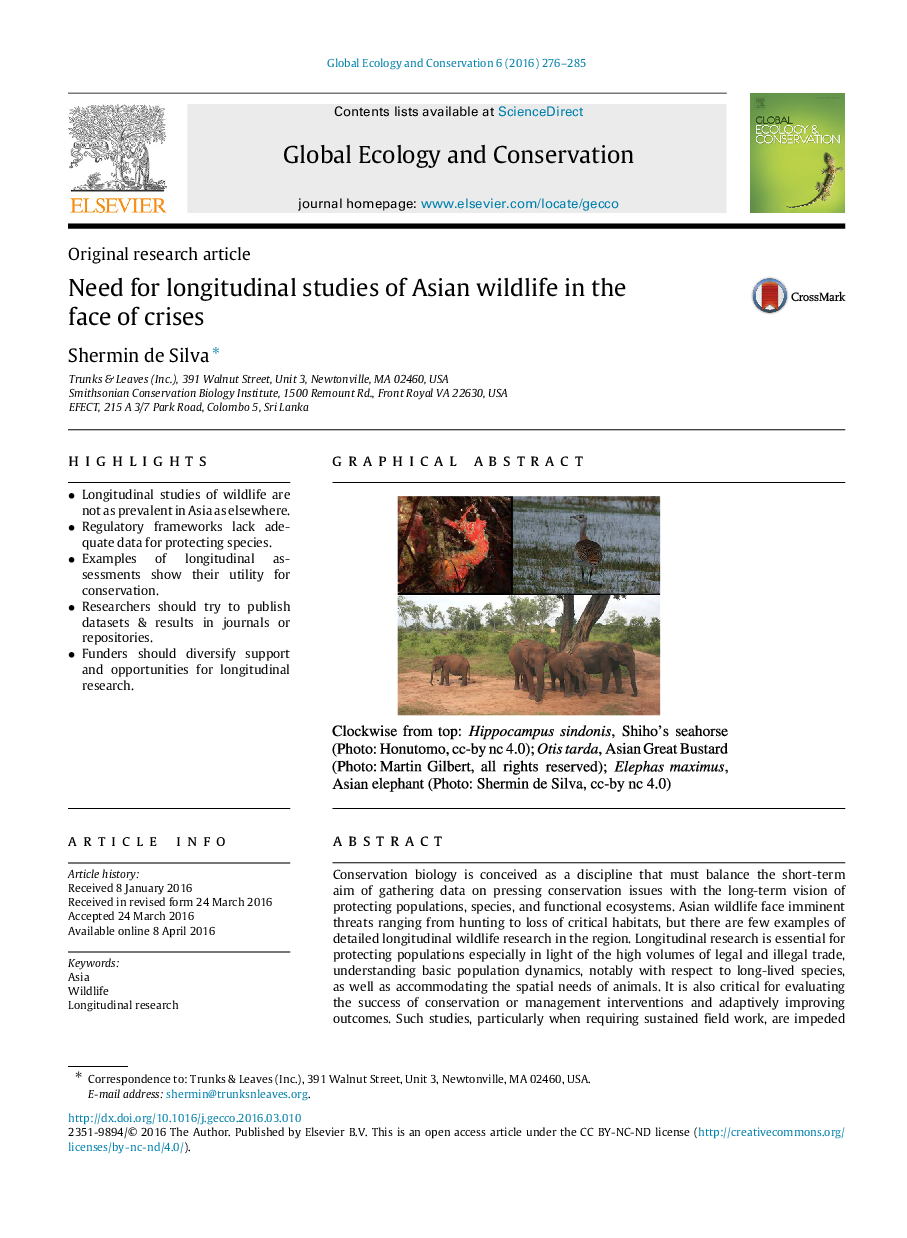| Article ID | Journal | Published Year | Pages | File Type |
|---|---|---|---|---|
| 4379651 | Global Ecology and Conservation | 2016 | 10 Pages |
•Longitudinal studies of wildlife are not as prevalent in Asia as elsewhere.•Regulatory frameworks lack adequate data for protecting species.•Examples of longitudinal assessments show their utility for conservation.•Researchers should try to publish datasets & results in journals or repositories.•Funders should diversify support and opportunities for longitudinal research.
Conservation biology is conceived as a discipline that must balance the short-term aim of gathering data on pressing conservation issues with the long-term vision of protecting populations, species, and functional ecosystems. Asian wildlife face imminent threats ranging from hunting to loss of critical habitats, but there are few examples of detailed longitudinal wildlife research in the region. Longitudinal research is essential for protecting populations especially in light of the high volumes of legal and illegal trade, understanding basic population dynamics, notably with respect to long-lived species, as well as accommodating the spatial needs of animals. It is also critical for evaluating the success of conservation or management interventions and adaptively improving outcomes. Such studies, particularly when requiring sustained field work, are impeded by mismatches between needs on the ground vs. the priorities of different stakeholders, the ephemeral and inefficient nature of funding mechanisms, and by the logistics of maintaining sites and personnel. Yet we cannot adequately protect biodiversity in Asia unless the magnitude of human impacts on its species is quantitatively understood and used to inform management.
Graphical abstractFigure optionsDownload full-size imageDownload as PowerPoint slide
